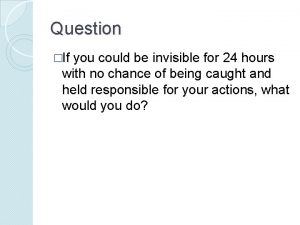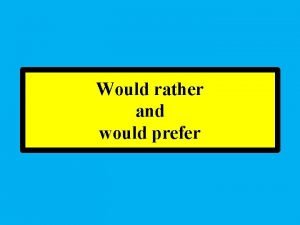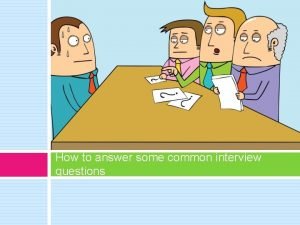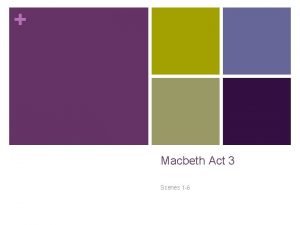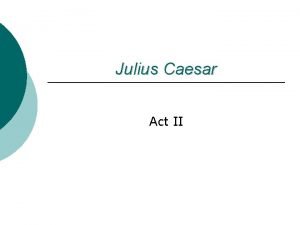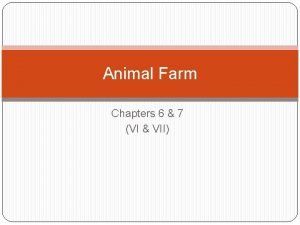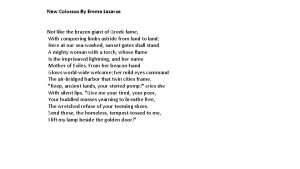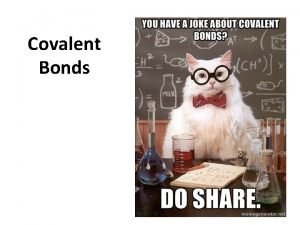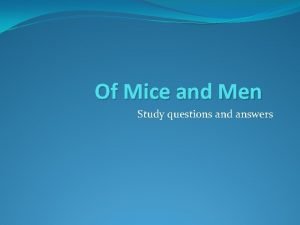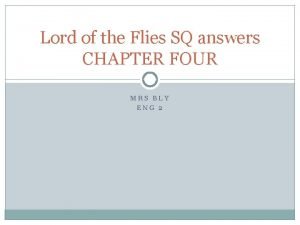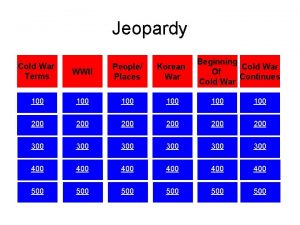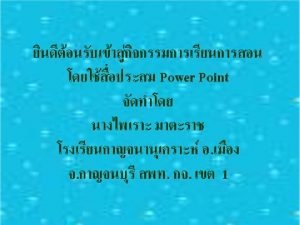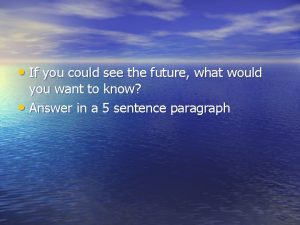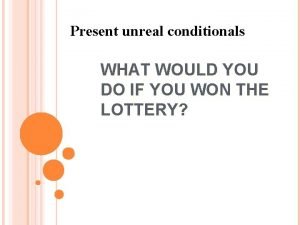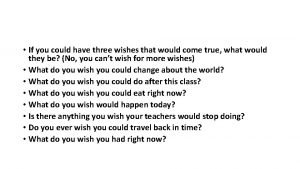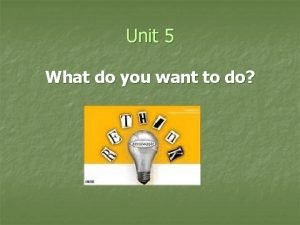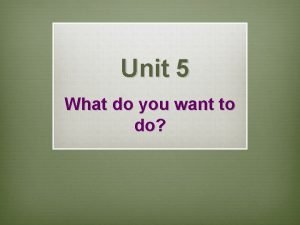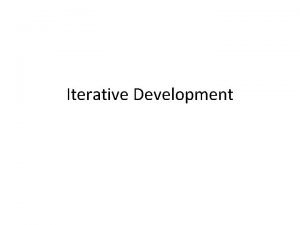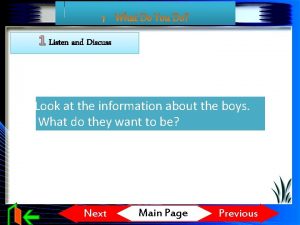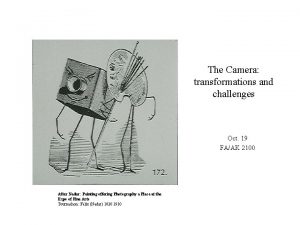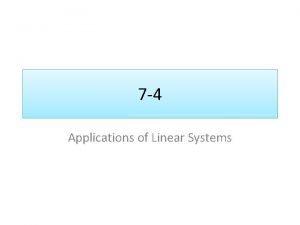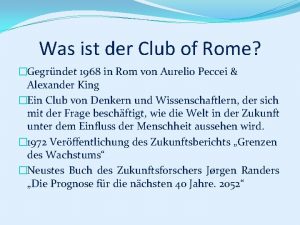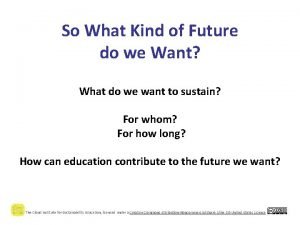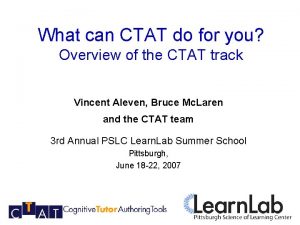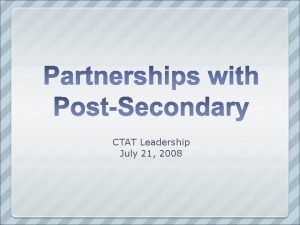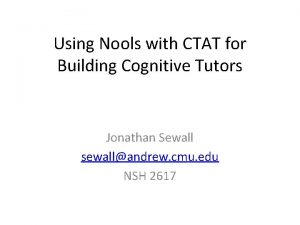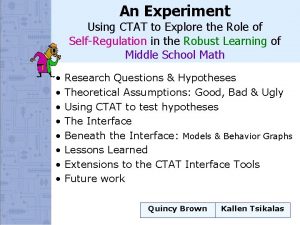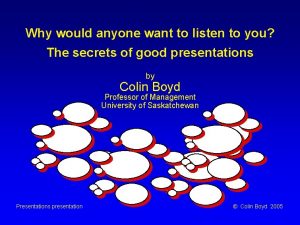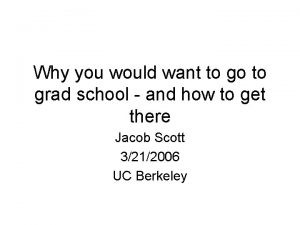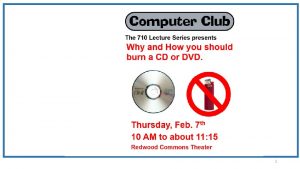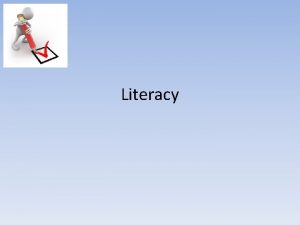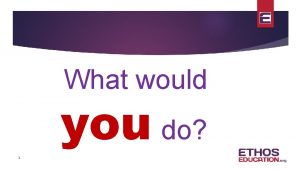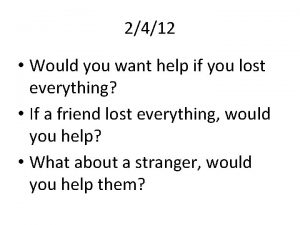What is CTAT and why would you want



![President Obama on Intelligent Tutoring Systems “[W]e will devote more than three percent of President Obama on Intelligent Tutoring Systems “[W]e will devote more than three percent of](https://slidetodoc.com/presentation_image_h/0a6b42ebdc49d7ecf2e810ab9a2c9ee6/image-4.jpg)


























































- Slides: 62

What is CTAT and why would you want to use it? Overview of the CTAT track Vincent Aleven and the CTAT team 5 th Annual PSLC Learn. Lab Summer School Pittsburgh, July 713 -17, 2009

Add: , Martin van Velsen CTAT - 2 © Vincent Aleven, & the CTAT Team, 2009 5 th Learn. Lab Summer School

CTAT - 3 © Vincent Aleven, & the CTAT Team, 2009 5 th Learn. Lab Summer School
![President Obama on Intelligent Tutoring Systems We will devote more than three percent of President Obama on Intelligent Tutoring Systems “[W]e will devote more than three percent of](https://slidetodoc.com/presentation_image_h/0a6b42ebdc49d7ecf2e810ab9a2c9ee6/image-4.jpg)
President Obama on Intelligent Tutoring Systems “[W]e will devote more than three percent of our GDP to research and development. …. Just think what this will allow us to accomplish: solar cells as cheap as paint, and green buildings that produce all of the energy they consume; learning software as effective as a personal tutor; prosthetics so advanced that you could play the piano again; an expansion of the frontiers of human knowledge about ourselves and world the around us. We can do this. ” http: //my. barackobama. com/page/community/post/amy hamblin/g. Gx. W 3 n CTAT - 4 © Vincent Aleven, & the CTAT Team, 2009 5 th Learn. Lab Summer School

Senator Obama: Barack Obama believes the nation can and must dramatically improve STEM education. As President, he will: … Integrate technology in the classroom so innovative learning technologies such as simulations, interactive games, and intelligent tutoring systems can assist in improving the quality of learning and instruction. … CTAT - 5 © Vincent Aleven, & the CTAT Team, 2009 5 th Learn. Lab Summer School

Overview • What is “a tutor? ” – What are essential characteristics of intelligent tutoring systems? – How do we know tutors help students learn more efectively? • What can you do with CTAT? – Short movie of authoring with CTAT – Examples of projects that have used CTAT • Planned activities in the CTAT track CTAT - 6 © Vincent Aleven, & the CTAT Team, 2009 5 th Learn. Lab Summer School

If you are not in the CTAT track, should you listen to this talk? • CTAT relevant to most other tracks: – In Vivo: could do an in vivo experiment with CTATbased tutors (happens all the time!) – Data Mining: many data sets in the Data Shop were generated using CTAT-built tutors – CSCL: Collaborative learning with intelligent tutors is an interesting and important research topic! • Track hopping is allowed! – E. g. , if in the In Vivo track, could attend CTAT sessions CTAT - 7 © Vincent Aleven, & the CTAT Team, 2009 5 th Learn. Lab Summer School

What is an intelligent tutoring system? • Tutor provides step-by-step support for practice of complex cognitive skill: – Interface makes reasoning steps (in given problem type) explicit – Correctness feedback – Next-step hints – Individualized problem selection based on detailed assessment of each student’s skill CTAT - 8 © Vincent Aleven, & the CTAT Team, 2009 5 th Learn. Lab Summer School

Algebra Cognitive Tutor Analyze real world problem scenarios Use graphs, graphics calculator Use table, spreadsheet Use equations, symbolic calculator Tutor follows along, provides context-sensitive Instruction Tutor learns about each student

Cognitive Tutor math courses making a difference • Real-world impact of Cognitive Tutors – 10 of 14 full year evaluations are positive – Spin-off Carnegie Learning doing well – 500, 000 students per year! CTAT - 10 © Vincent Aleven, & the CTAT Team, 2009 5 th Learn. Lab Summer School

Replicated Field Studies • Full year classroom experiments • Replicated over 3 years in urban schools • In Pittsburgh & Milwaukee • Results: 50 -100% better on problem solving & representation use. 15 -25% better on standardized tests. Koedinger, Anderson, Hadley, & Mark (1997). Intelligent tutoring goes to school in the big city. International Journal of Artificial Intelligence in Education, 8. CTAT - 11 © Vincent Aleven, & the CTAT Team, 2009 5 th Learn. Lab Summer School

The nested loop of conventional teaching For each chapter in curriculum • Read chapter • For each exercise, solve it • Teacher gives feedback on all solutions at once • Take a test on chapter Van. Lehn, K. (2006). The behavior of tutoring systems. International Journal of Artificial Intelligence in Education, 16(3), 227 -265. CTAT - 12 © Vincent Aleven, & the CTAT Team, 2009 5 th Learn. Lab Summer School

The nested loops of Computer. Assisted Instruction (CAI) For each chapter in curriculum • Read chapter • For each exercise – Attempt answer – Get feedback & hints on answer; try again – If mastery is reached, exit loop • Take a test on chapter Van. Lehn, K. (2006). The behavior of tutoring systems. International Journal of Artificial Intelligence in Education, 16(3), 227 -265. CTAT - 13 © Vincent Aleven, & the CTAT Team, 2009 5 th Learn. Lab Summer School

The nested loops of ITS For each chapter in curriculum • Read chapter • For each exercise – For each step in solution • Student attempts step • Get feedback & hints on step; try again – If mastery is reached, exit loop • Take a test on chapter Van. Lehn, K. (2006). The behavior of tutoring systems. International Journal of Artificial Intelligence in Education, 16(3), 227 -265. CTAT - 14 © Vincent Aleven, & the CTAT Team, 2009 5 th Learn. Lab Summer School

Feedback Studies in LISP Tutor (Corbett & Anderson, 1991) Time to Complete Programming Problems in LISP Tutor Immediate Feedback Vs Student-Controlled Feedback CTAT - 15 © Vincent Aleven, & the CTAT Team, 2009 5 th Learn. Lab Summer School

Kinds of Computer Tutors Tutoring systems CAI e. g. , Microsoft’s Personal Tutor Intelligent tutoring systems e. g. , Sherlock Constraintbased tutors e. g. , SQL Tutor Model-tracing tutors e. g. , Andes Cognitive Tutors e. g. , Algebra Example-tracing tutors e. g. , Stoichiometry, French Culture Tutor Can be built with CTAT - 16 © Vincent Aleven, & the CTAT Team, 2009 5 th Learn. Lab Summer School

ACT-R: A Cognitive Theory of Learning and Performance • Big theory … key tenets: – Learning by doing, not by listening or watching – Production rules represent performance knowledge: These units are: • modular • context specific Instruction implications: isolate skills, concepts, strategies address "when" as well as "how" Anderson, J. R. , & Lebiere, C. (1998). The Atomic Components of Thought. Erlbaum. CTAT - 17 © Vincent Aleven, & the CTAT Team, 2009 5 th Learn. Lab Summer School

Cognitive Tutor Technology: Use ACT-R theory to individualize instruction • Cognitive Model: A system that can solve problems in the various ways students can CTAT - 18 Strategy 1: IF the goal is to solve a(bx+c) = d THEN rewrite this as abx + ac = d Strategy 2: IF the goal is to solve a(bx+c) = d THEN rewrite this as bx + c = d/a Misconception: IF the goal is to solve a(bx+c) = d THEN rewrite this as abx + c = d © Vincent Aleven, & the CTAT Team, 2009 5 th Learn. Lab Summer School

Cognitive Tutor Technology: Use ACT-R theory to individualize instruction • Cognitive Model: A system that can solve problems in the various ways students can 3(2 x - 5) = 9 If goal is solve a(bx+c) = d Then rewrite as abx + ac = d If goal is solve a(bx+c) = d Then rewrite as abx + c = d If goal is solve a(bx+c) = d Then rewrite as bx+c = d/a 6 x - 15 = 9 2 x - 5 = 3 6 x - 5 = 9 • Model Tracing: Follows student through their individual approach to a problem -> context-sensitive instruction CTAT - 19 © Vincent Aleven, & the CTAT Team, 2009 5 th Learn. Lab Summer School

Cognitive Tutor Technology: Use ACT-R theory to individualize instruction • Cognitive Model: A system that can solve problems in the various ways students can 3(2 x - 5) = 9 If goal is solve a(bx+c) = d Then rewrite as abx + ac = d If goal is solve a(bx+c) = d Then rewrite as abx + c = d Hint message: “Distribute a across the parentheses. ” Known? = 85% chance 6 x - 15 = 9 Bug message: “You need to multiply c by a also. ” Known? = 45% 2 x - 5 = 3 6 x - 5 = 9 • Model Tracing: Follows student through their individual approach to a problem -> context-sensitive instruction • Knowledge Tracing: Assesses student's knowledge growth -> individualized activity selection and pacing CTAT - 20 © Vincent Aleven, & the CTAT Team, 2009 5 th Learn. Lab Summer School

CTAT motivation: Make tutor development easier and faster! • Cognitive Tutors: – Large student learning gains as a result of detailed cognitive modeling – ~200 dev hours per hour of instruction (Koedinger et al. , 1997) – Requires Ph. D level cog scientists and AI programmers • Development costs of instructional technology are, in general, quite high – E. g. , ~300 dev hours per hour of instruction for Computer Aided Instruction (Murray, 1999) • Solution: Easy to use Cognitive Tutor Authoring Tools (CTAT) Murray, T. (1999). Authoring Intelligent Tutoring Systems: An Analysis of the state of the art. The International Journal of Artificial Intelligence in Education, 10, 98 -129. Koedinger, K. R. , Anderson, J. R. , Hadley, W. H. , & Mark, M. A. (1997). Intelligent tutoring goes to school in the big city. The International Journal of Artificial Intelligence in Education, 8, 30 -43. CTAT - 21 © Vincent Aleven, & the CTAT Team, 2009 5 th Learn. Lab Summer School

CTAT goal: broaden the group of targeted authors • Instructional technology developers (e. g. , instructional media dept. at university, or developers of on-line courses) • Researchers interested in intelligent tutoring systems • Instructors (e. g. , computer-savvy college professors) • Learning sciences researchers interested in using computer-based tutors in their experiments – Within the PSLC, CTAT-based tutors are often used in in vivo experiments CTAT - 22 © Vincent Aleven, & the CTAT Team, 2009 5 th Learn. Lab Summer School

How to reduce the authoring cost? • Less programming, more automation – Drag & drop interface construction – Demonstration-based programming – New: Machine learning and data mining • Human-Computer Interaction (HCI) methods – User studies, summer schools, informal & formal comparison studies • Exploit tools already in use – Component-based architecture with “standard” tooltutor protocol – Off-the-shelf tools and languages (e. g. , Netbeans, Eclipse, Flash, Jess) CTAT - 23 © Vincent Aleven, & the CTAT Team, 2009 5 th Learn. Lab Summer School

Tutors supported by CTAT • Cognitive Tutors – Difficult to build; for programmers – Uses rule-based cognitive model to guide students – General for a class of problems • Example-Tracing Tutors – – – CTAT - 24 Novel ITS technology Much easier to build; for non-programmers Use generalized examples to guide students Programming by demonstration One problem (or so) at a time © Vincent Aleven, & the CTAT Team, 2009 5 th Learn. Lab Summer School

Building an example-tracing tutor in 5 easy steps … • CTAT basics only! – Drag-and-drop techniques – Programming by demonstration • Fraction addition example: 1/4 + 1/6 = 3/12 + 2/12 = 5/12 1/4 + 1/6 = 6/24 + 4/24 = 10/24 = 5/12 CTAT - 25 © Vincent Aleven, & the CTAT Team, 2009 5 th Learn. Lab Summer School

Movie Showing How an Example. Tracing Tutor is built CTAT - 26 © Vincent Aleven, & the CTAT Team, 2009 5 th Learn. Lab Summer School

Authoring an Example-Tracing Tutor Step 1: Create a User Interface – Create the graphical user interface (GUI) used by the student Step 2: Demonstrate Behavior – Demonstrate correct, alternative correct, and incorrect solutions Step 3: Annotate the Graph – Annotate solutions steps in the resulting “behavior graph” with: • hint messages, • error messages, • labels for concepts or skills associated with actions Step 4: Generalize – Specify how demonstrated behavior could vary within given problem • allowed order of steps • allowed variants for a given step (formulas, ranges, reg exps) Test and Iterate on Steps 1 -4 … Step 5: Test the tutor Step 6: Template-based Mass Production CTAT - 27 © Vincent Aleven, & the CTAT Team, 2009 5 th Learn. Lab Summer School

1. Create student interface with GUI builder Net. Beans IDE CTAT - 28 © Vincent Aleven, & the CTAT Team, 2009 5 th Learn. Lab Summer School

1. a. Alternative way of building interfaces: Flash CTAT - 29 © Vincent Aleven, & the CTAT Team, 2009 5 th Learn. Lab Summer School

2. Demonstrate problem-solving behavior CTAT - 30 © Vincent Aleven, & the CTAT Team, 2009 5 th Learn. Lab Summer School

2. Demonstrate problem-solving behavior CTAT - 31 © Vincent Aleven, & the CTAT Team, 2009 5 th Learn. Lab Summer School

2. Demonstrate problem-solving behavior CTAT - 32 © Vincent Aleven, & the CTAT Team, 2009 5 th Learn. Lab Summer School

3. Annotate graph: hint messages CTAT - 33 © Vincent Aleven, & the CTAT Team, 2009 5 th Learn. Lab Summer School

3. Annotate graph: incorrect step, feedback CTAT - 34 © Vincent Aleven, & the CTAT Team, 2009 5 th Learn. Lab Summer School

3. Annotate graph with knowledge components CTAT - 35 © Vincent Aleven, & the CTAT Team, 2009 5 th Learn. Lab Summer School

3. View knowledge component matrix CTAT - 36 © Vincent Aleven, & the CTAT Team, 2009 5 th Learn. Lab Summer School

4. Generalize • Ask if you’d like to hear more about this CTAT - 37 © Vincent Aleven, & the CTAT Team, 2009 5 th Learn. Lab Summer School

5. Test the tutor CTAT - 38 © Vincent Aleven, & the CTAT Team, 2009 5 th Learn. Lab Summer School

5. Test the tutor CTAT - 39 © Vincent Aleven, & the CTAT Team, 2009 5 th Learn. Lab Summer School

Example-tracing algorithm • Basic idea: To complete a problem, student must complete one path through the graph • Example tracer flexibly compares student solution steps against a graph – Keeps track of which paths are consistent with student steps so far – Can maintain multiple parallel interpretations of student behavior – Accepts student actions as correct when they are consistent with prior actions CTAT - 40 © Vincent Aleven, & the CTAT Team, 2009 5 th Learn. Lab Summer School

6. Dealing with problem isomorphs and near-isomorphs: Mass Production • Goal: avoid duplicating behavior graph structure across or within problems • Would like to re-use behavior graph for 1/4 + 1/6 = 3/12 + 2/12 = 5/12 1/4 + 1/6 = 6/24 + 4/24 = 10/24 = 5/12 • When creating behavior graph for isomorphic problems: 1/6 + 3/8 = 4/24 + 9/24 = 13/24 1/6 + 3/8 = 8/48 + 18/48= 26/48 = 13/24 • And when creating behavior graph for nearisomorphic problems: 1/6 + 1/10 = 5/30 + 3/30 = 8/30 = 4/15 1/6 + 1/10 = 10/60 + 6/60 = 16/60 = 4/15 CTAT - 41 © Vincent Aleven, & the CTAT Team, 2009 5 th Learn. Lab Summer School

Mass Production: template-based tutor authoring to generate (near)isomorphic behavior graphs 1. Turn Behavior Graph into template (insert variables) 2. Fill in spreadsheet with problem-specific info; provide variable values per problem 3. Merge spreadsheet values into template CTAT - 42 © Vincent Aleven, & the CTAT Team, 2009 5 th Learn. Lab Summer School

Vote-with-your-feet evidence of CTAT’s utility • Over 400 people have used CTAT in summer schools, courses, workshops, research, and tutor development projects • In the past two years – CTAT was downloaded 4, 300 times – the CTAT website drew over 1. 5 million hits from over 100, 000 unique visitors – URL: http: //ctat. pact. cs. cmu. edu CTAT - 43 © Vincent Aleven, & the CTAT Team, 2009 5 th Learn. Lab Summer School

CTAT - 44 © Vincent Aleven, & the CTAT Team, 2009 5 th Learn. Lab Summer School

Some CTAT tutors used in online courses and research Chemistry Genetics French CTAT - 45 © Vincent Aleven, & the CTAT Team, 2009 5 th Learn. Lab Summer School

Some CTAT tutors used in research Thermo-dynamics Elementary Math French (intercultural competence) CTAT - 46 © Vincent Aleven, & the CTAT Team, 2009 5 th Learn. Lab Summer School

CTAT - 47 © Vincent Aleven, & the CTAT Team, 2009 5 th Learn. Lab Summer School

Inner loop options: within-problem guidance offered by ITS + Minimal feedback on steps (classifies steps as correct, incorrect, or suboptimal) + Immediate +/– Delayed (not built in, but some forms can be authored) – Demand + Error-specific feedback + Hints on the next step + Assessment of knowledge – End-of-problem review of the solution Van. Lehn, K. (2006). The behavior of tutoring systems. International Journal of Artificial Intelligence in Education, 16(3), 227 -265. Aleven, V. , Mc. Laren, B. M. , Sewall, J. , & Koedinger, K. R. (in press). Example-tracing tutors: A new paradigm for intelligent tutoring systems. International Journal of Artificial Intelligence and Education. CTAT - 48 – CTAT supports it (+) CTAT will soon support it +/– CTAT supports a limited form of it – CTAT does not support it © Vincent Aleven, & the CTAT Team, 2009 5 th Learn. Lab Summer School

Outer loop: problem selection options offered by ITS – Student picks + Fixed sequence (+) Mastery learning (+) Macroadaptation Van. Lehn, K. (2006). The behavior of tutoring systems. International Journal of Artificial Intelligence in Education, 16(3), 227 -265. Aleven, V. , Mc. Laren, B. M. , Sewall, J. , & Koedinger, K. R. (in press). Example-tracing tutors: A new paradigm for intelligent tutoring systems. International Journal of Artificial Intelligence and Education. CTAT - 49 – CTAT supports it (+) CTAT will soon support it +/– CTAT supports a limited form of it – CTAT does not support it © Vincent Aleven, & the CTAT Team, 2009 5 th Learn. Lab Summer School

Cost estimates from largescale development efforts • Historic estimate: it takes 200 -300 hours to create 1 hour of ITS instruction, by skilled AI programmers (Anderson, 1991; Koedinger et al. , 1997; Murray, 2003; Woolf & Cunningham, 1987) • Project-level comparisons: + Realism, all phases of tutor development – High variability in terms of developer experience, outcomes (type and complexity of tutors), within-project economy-of -scale – Many arbitrary choices in deriving estimates – Can be difficult to track – Can be difficult to separate tool development and tutor development CTAT - 50 © Vincent Aleven, & the CTAT Team, 2009 5 th Learn. Lab Summer School

Development time estimates CTAT - 51 Project Title Domain Studies Students Instructional Development Time Ratio Improving Skill at Solving Equations through Better Encoding of Algebraic Concepts Middle and High School Math Algebra 3 268 16 mins each for 2 conditions ~120 hrs 240: 1 Using Elaborated Explanations to Support Geometry Learning Geometry 1 90 30 mins ~2 months 720: 1 The Self-Assessment Tutor Geometry - Angles, Quadrilaterals 1 67 45 mins ~9 weeks 540: 1 Enhancing Learning Through Worked Examples with Interactive Graphics Algebra - Equation Models of Problem Situations 1 60 -120 ~3 hrs ~260 hrs 87: 1 Fluency and Sense Making in Elementary Math Learning 4 th-Grade Math Whole-number division 1 ~35 2. 5 hrs each for 2 conditions plus 1 hr of assessment ~4 months 107: 1 The Fractions Tutor 6 th-Grade Math Fraction Conversion, Fraction Addition 1 132 2. 5 hours each for 4 conditions 12 weeks 48: 1 Effect of Personalization and Worked Examples in the Solving of Stoichiometry Chemistry Stoichiometry 4 223 12 hrs 1016 hrs 85: 1 © Vincent Aleven, & the CTAT Team, 2009 5 th Learn. Lab Summer School

Discussion of costeffectiveness • All tutors were used in actual classrooms • Small projects worse than historical estimates (1: 200 to 1: 300) • Large projects (> 3 hrs. ) 3 -4 times better (1: 50 to 1: 100) • Factor in that programmers cost 1. 5 -2 times as much as non-programmer developers: total savings 4 -8 times • Caveats: Rough estimates, historic estimates based on larger projects CTAT - 52 © Vincent Aleven, & the CTAT Team, 2009 5 th Learn. Lab Summer School

During the summer school • The CTAT track will cover development of Cognitive Tutors and Example-Tracing Tutors – Number of “how to” lectures – In your project you could decide to focus mainly on example-tracing tutors – (Then again, this is your chance to get some mentoring as you build a Cognitive Tutor) • If you are not in the CTAT track, but interested in learning to build tutors in limited time, it is best to focus on example-tracing tutors CTAT - 53 © Vincent Aleven, & the CTAT Team, 2009 5 th Learn. Lab Summer School

That’s all for now! CTAT - 54 © Vincent Aleven, & the CTAT Team, 2009 5 th Learn. Lab Summer School

Multiple solution paths enable context-sensitive hints • You need to convert the fractions to a common denominator. • You need to find a number that is a multiple of 4 and a multiple of 6. • The smallest number that is a multiple of 4 and a multiple of 6 is 12. CTAT - 55 © Vincent Aleven, & the CTAT Team, 2009 5 th Learn. Lab Summer School

Multiple solution paths enable context-sensitive hints • You need to convert both fractions to the same denominator. • Please enter ’ 12' in the highlighted field. CTAT - 56 © Vincent Aleven, & the CTAT Team, 2009 5 th Learn. Lab Summer School

Multiple solution paths enable context-sensitive hints • 1 goes into 4 the same as 3 goes into what number? • You multiplied by 3 to go from 1 to 3. You need to multiply 4 by the same number. • Please enter ’ 12' in the highlighted field. CTAT - 57 © Vincent Aleven, & the CTAT Team, 2009 5 th Learn. Lab Summer School

Multiple solution paths enable context-sensitive hints Would not give a hint for the first converted denominator. Would give hints for the second denominator first. CTAT - 58 © Vincent Aleven, & the CTAT Team, 2009 5 th Learn. Lab Summer School

To realize this hinting flexibility, need more elaborate behavior graph Does the extra flexibility lead to more robust student learning? CTAT - 59 © Vincent Aleven, & the CTAT Team, 2009 5 th Learn. Lab Summer School

Multiple solution strategies by “formulas” • Excel-like formulas express how steps depend on each other • A form of end user programming CTAT - 60 © Vincent Aleven, & the CTAT Team, 2009 5 th Learn. Lab Summer School

Example: Use of formulas • Enumeration of paths: 6 paths for question 2 CTAT - 61 © Vincent Aleven, & the CTAT Team, 2009 5 th Learn. Lab Summer School

Example: Use of formulas Question 2 Pennies: member. Of(input, 0, 100, 200) Dollars: member. Of(input, 0, 1, 2) Pennies: =200 -100*link 7. input Dollars: =round(2 -link 18. input/100) CTAT - 62 © Vincent Aleven, & the CTAT Team, 2009 5 th Learn. Lab Summer School
 Would prefer not to grammar
Would prefer not to grammar Why would blanche want to wear a della robbia blue dress
Why would blanche want to wear a della robbia blue dress If you could be invisible what would you do and why?
If you could be invisible what would you do and why? Hey bye bye
Hey bye bye Would prefer would rather
Would prefer would rather Why do you want to work for us
Why do you want to work for us Why do you cry willie
Why do you cry willie Spoken word poetry allows you to be anyone you want to be
Spoken word poetry allows you to be anyone you want to be What profession do you like
What profession do you like Macbeth act 2 scene 3 comic relief
Macbeth act 2 scene 3 comic relief Dont ask
Dont ask Why doesn't dally want johnny to go to jail *
Why doesn't dally want johnny to go to jail * The lightning thief activities
The lightning thief activities What promise does brutus make to rome?
What promise does brutus make to rome? Without whom would the windmill have been impossible
Without whom would the windmill have been impossible Why did isolationists want these laws passed?
Why did isolationists want these laws passed? Tsotsi notes
Tsotsi notes What is haymitch's training strategy for katniss and peeta?
What is haymitch's training strategy for katniss and peeta? Why was josette dugas for the war of 1812
Why was josette dugas for the war of 1812 I want a wife satire
I want a wife satire Emma lazarus quote
Emma lazarus quote Molecules with single covalent bonds
Molecules with single covalent bonds Reasons for merger singapore and malaysia
Reasons for merger singapore and malaysia Omam study guide
Omam study guide Why were the littluns used to stomach aches
Why were the littluns used to stomach aches How did the cold war begin
How did the cold war begin Why does dr. nemur want the experiment to be successful?
Why does dr. nemur want the experiment to be successful? Dhondu thought that his elder uncle's behaviour was
Dhondu thought that his elder uncle's behaviour was Romeo and juliet act 1 scene 1
Romeo and juliet act 1 scene 1 If + past simple
If + past simple If you had studied hard
If you had studied hard If you could see the future what would you do
If you could see the future what would you do If you died tonight would you go to heaven
If you died tonight would you go to heaven Expenseondemand
Expenseondemand Conditional 4 types
Conditional 4 types Present unreal conditional structure
Present unreal conditional structure If i had three wishes they would be
If i had three wishes they would be Direct speech to reported speech
Direct speech to reported speech Lirik lagu more more more we praise you
Lirik lagu more more more we praise you More more more i want more more more more we praise you
More more more i want more more more more we praise you Unit 5 what do you want to do
Unit 5 what do you want to do Go con ing
Go con ing So you want to be a social worker
So you want to be a social worker Don't leave home without it slogan
Don't leave home without it slogan Glittering generalities advertising
Glittering generalities advertising Motivated last thing you want do
Motivated last thing you want do If you want to go fast
If you want to go fast We ______ snowman in winter.
We ______ snowman in winter. Omar hamdan lives in tabuk.
Omar hamdan lives in tabuk. Jeff wall photography
Jeff wall photography I surrender i want to know you more
I surrender i want to know you more Do you want me to be honest
Do you want me to be honest Suppose you want to combine two types of fruit drink
Suppose you want to combine two types of fruit drink How did helen keller overcome adversity
How did helen keller overcome adversity Do you want to be made well
Do you want to be made well I want you doing
I want you doing Which country do you want to go
Which country do you want to go We want you
We want you If you want joy real joy wonderful joy
If you want joy real joy wonderful joy What kind of future do you want
What kind of future do you want Who said it
Who said it Unit 5 what do you want to do
Unit 5 what do you want to do Privacy is the right to be left alone when you want to be
Privacy is the right to be left alone when you want to be


